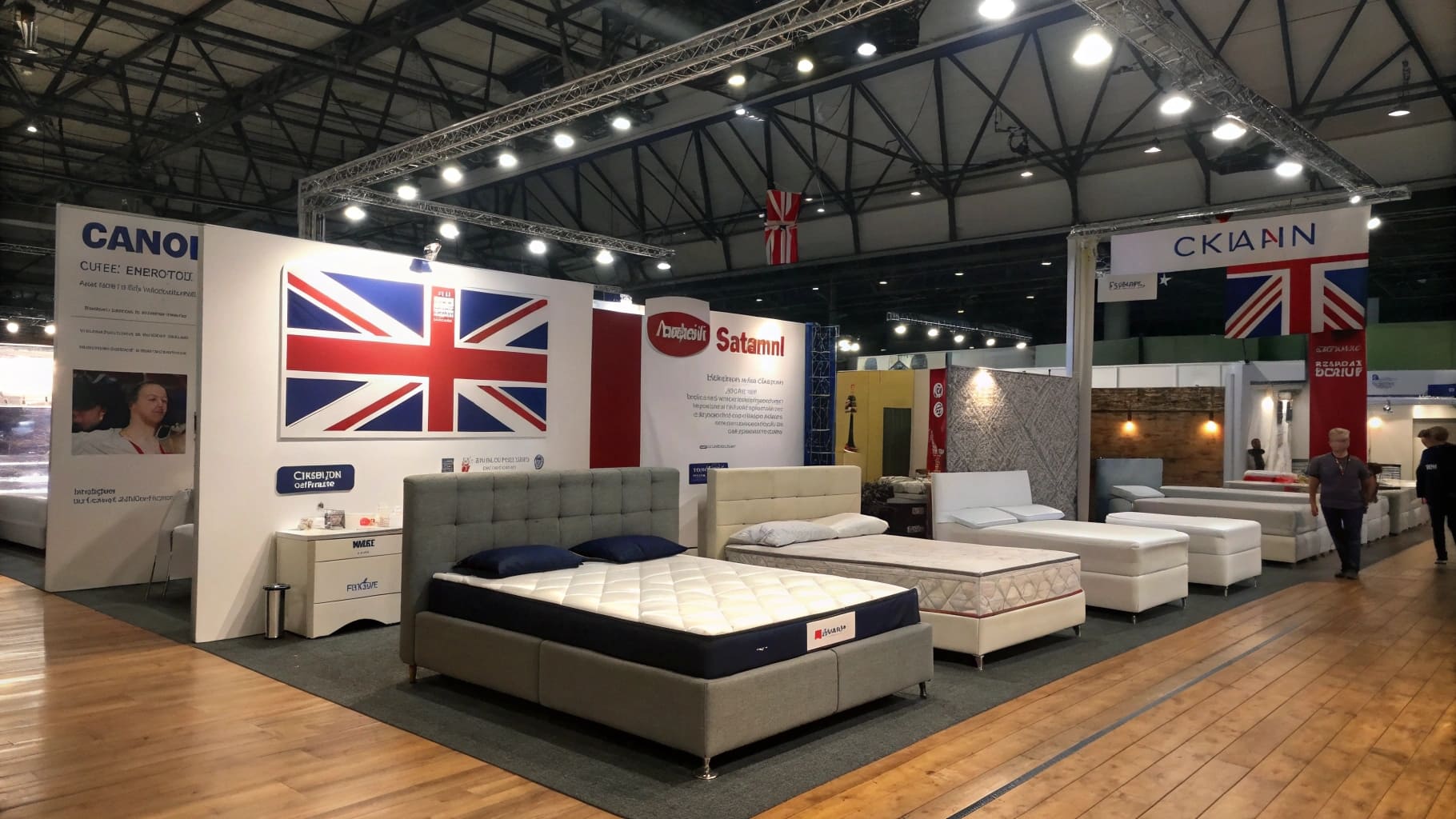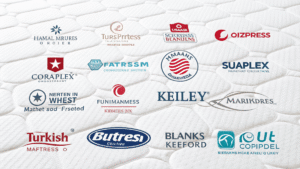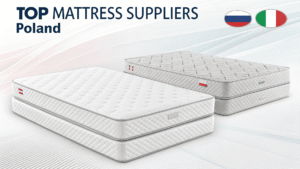Mattress sales in the UK are changing fast. If you miss the shift, you miss the profit.
The UK mattress market in 2025 is worth £1.58 billion, growing fast thanks to foam innovations, online sales, and consumer demand for sustainability.

More and more UK buyers care about how they sleep, not just where. They’re looking beyond price. They want comfort, convenience, and cleaner options. That’s why foam and hybrid models, recycled materials, and smart mattresses1 are becoming mainstream. If you're a retailer or wholesaler, these trends tell you where to aim next.
How big is the UK mattress market in 2025 and what does it mean for retailers?
Sales alone don't tell the whole story. What matters is how the numbers affect your next move.
In 2025, the UK mattress market reaches £1.58 billion, with a steady CAGR of 5.4% to 2030—meaning growth opportunities for any retailer who adapts early.

The UK mattress market is growing steadily. In 2025, it hits around £1.58 billion. By 2030, it’s expected to hit £2.17 billion. That’s a CAGR of 5.42% across five years. Some data sources suggest even higher growth, citing 6.7% CAGR, depending on the measurement base (GBP vs USD). As a factory owner, I pay close attention to those numbers because they tell me one thing: UK retailers need more reliable sourcing.
When I speak with UK buyers, many ask about double (137x191 cm) and king (150x200 cm) mattresses—those sizes sell best. They also prefer gas lift beds to maximize space. Beige, grey, and black still dominate color demand.
We’ve seen an uptick in orders for foam-based mattresses. Innerspring models still sell, but foam is growing faster. If you’re retailing in the UK, staying stocked with both types is a safe play, especially if you offer comfort upgrades like gel memory foam or breathable layers.
What is the future of the mattress industry?
The industry won’t look the same in five years. Retailers who stick to old models will get left behind.
The mattress industry is moving toward foam, hybrids, and smart beds—with sustainability and digital sales leading the way.

From my side of the business, I’ve seen a clear shift. Buyers are not only asking for comfort. They want tech. They want cleaner materials. And they want better sleep.
Smart mattresses are now entering the UK, with models offering sleep tracking, automatic firmness adjustment, and even temperature regulation. Globally, this market is worth $1.8 billion in 2025 and growing. While smart beds still represent a premium category, we’re preparing for it. Retailers who serve tech-savvy consumers should start planning now.
At the same time, foam and hybrid designs are gaining share. Hybrid beds—those that combine coils with foam—strike a balance between tradition and innovation. We’ve seen a 6.8% growth trend in this segment alone.
Younger buyers especially look for eco-friendly packaging, chemical-free foams, and fast delivery. If you're in retail, offering memory foam with cooling gel or charcoal-infused layers isn’t optional anymore—it’s expected.
What consumer trends are shaping mattress retail in the UK?
Your customers have changed. They're not just price-sensitive—they’re value-sensitive.
UK mattress buyers in 2025 want eco-conscious2, health-friendly, and easy-to-buy products—delivered fast, with comfort that lasts.

The typical UK consumer now wants a mattress that feels good and aligns with their values. That means non-toxic materials, UKFR compliance, and longer-lasting durability.
I’ve noticed this especially with online buyers. They’ll scroll past 20 listings just to find one with the right certifications and better pictures. That’s why we always supply high-res photography, English manuals, and packaging that survives courier drops.
The Register of Approved Mattress Recyclers (RAMR), introduced in 2023, has made mattress disposal a public issue. This drives demand for recyclable and modular mattresses. Retailers should look for products that reduce long-term waste and promote those benefits clearly.
Foam products with removable covers and water-based adhesives are selling better across e-commerce platforms. Even for brick-and-mortar stores, displaying environmental credentials builds trust and sales.
Which mattress types are most profitable for retailers in 2025?
Margins matter more than ever. But what sells fast and earns high return?
Foam and hybrid mattresses are the most profitable in 2025, offering better margins than innerspring models and higher repeat satisfaction.

Foam mattresses are currently our most requested item from UK clients. Not only are they lighter (which reduces shipping costs), but they also allow better compression and roll-packing, saving space and improving logistics.
From a profit perspective, foam beds allow for upselling. Options like gel-infused foam, bamboo covers, and extra-firm layers allow retailers to mark up without losing price competitiveness. We’ve had several retailers in the UK switch to stocking only foam and hybrid models for this reason.
Innerspring beds still move in volume, especially in bulk B2B orders. However, they carry higher freight costs and lower margins due to higher material cost and fixed form.
Hybrid mattresses offer the best of both—good comfort, appealing specs, and enough room for 30–40% markup. Many of our UK buyers build bundles with hybrid mattresses plus storage beds to optimize ticket size per order.
How can European retailers adapt to the UK’s evolving sleep economy?
You don’t just need to know the trend—you need to sell into it.
To win in the UK market, retailers should prioritize eco-compliance, tech features, and direct-from-factory sourcing with local-size and style support.

Retailers across Europe who want to succeed in the UK must understand one thing: the market has shifted to niche demands. It’s no longer just about supplying beds—it’s about supplying the right beds.
We help our clients by offering UK sizes, fire-retardant covers, and smart packaging that works with UK couriers like Yodel or DPD. Double (137x191 cm) and king (150x200 cm) are the best-sellers, and beige/grey/black remain the safest colors.
We also provide gas lift storage models in both side-lift and back-lift variants. These match the UK’s space-saving priorities. Retailers who offer gas lift frames bundled with foam mattresses3 see the highest conversion rates.
To keep pace with the sleep economy, buyers should avoid over-relying on stock products. Go for custom ODM designs, push velvet and sustainable materials, and lock in container pricing based on realistic lead times. As a manufacturer, I can confirm the best results come when you partner early and plan quarterly.
Conclusion
The UK mattress market is growing, and buyers are changing fast. Stay ahead by adapting your product lines and supplier strategies now.
-
Discover the innovative features of smart mattresses, such as sleep tracking and temperature control, that are reshaping the mattress industry. ↩
-
Learn about eco-conscious mattress options that align with consumer values, focusing on sustainability and health benefits in the UK market. ↩
-
Explore the advantages of foam mattresses, including comfort, support, and eco-friendliness, to understand why they are trending in the UK market. ↩




